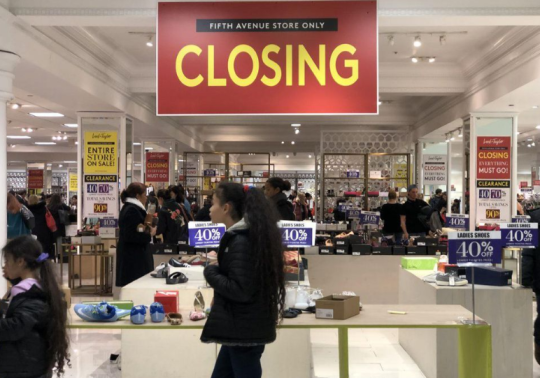
The report that Barneys
New York is examining strategic alternatives that could include a
bankruptcy or sale is the latest indicator that department stores —
even the luxury ones — just aren’t moving the needle for shoppers. Last week,
UBS analysts described Nordstrom as a “no-growth retailer,” one that
hasn’t been able to fight off pricing perception and a cultural shift in
consumer spending. While it remains up for debate whether the analysis of
Nordstrom is as grave as it sounds, it once again brings up a serious point: department
stores are struggling to keep up with the rest of the industry, and they will
require major changes going forward if they want to be top-of-mind for future
shoppers.
The RTP editors share their opinions on the future of
department stores and what they will look like over the next decade.
Adam Blair, Editor: Predicting the future is a
tricky business, and I would love to be proven wrong about this, but I fear
department stores — at least as we know them — will be retail relics by the
turn of the next decade. Their functions as places of inspiration — where
anyone and everyone could learn about the latest offerings of a vibrant
consumer culture — have been largely supplanted by social media. The Targets,
Walmarts, Amazons and dollar stores of the world have taken
their place as the “something for everyone in the household” stores; specialty
retailers, for example Bonobos for men’s clothes, are serving
those seeking a more personalized shopping experience. Systemic issues, such as
the high urban rents that may push Barneys into bankruptcy and the stagnant
wage growth of the middle class, are unlikely to be fixed any time soon. While
physical stores in general have many paths to a successful future, I think all
but a few department stores will be dragged down by a toxic combination: too
many brick-and-mortar locations and too few younger shoppers that remember department
stores as magical places.
Glenn Taylor, Senior Editor: Store closures will
continue to be a recurring theme for department stores, particularly with the
changing role of malls, which simply don’t
rely on the anchor store the way they used to. With that said, it’s obvious
changes need to be made if these retailers want their remaining stores to
matter. Partnerships with more nimble digital native brands will be the norm, although
these will probably benefit the latter more than the department store. I look
at the STORY concepts at Macy’s and wonder how they would have
gone over for the brand if it was 2000 instead of 2018. Back then, a change
like that could have been massive as far as providing experiences that simply
weren’t in most stores yet. The idea is a very interesting way to shake things
up for the shopper experience, and that was sorely needed even before the
e-Commerce era kicked into high gear. Macy’s would have really stood out as a
place where consumers knew they would see something different any time they
shopped there. That may ring true today with the 36
stores implementing the STORY themes, but it doesn’t have nearly as big an
impact on the company’s overall standing within the industry due to the excess of
experiential options everywhere else. I like what Macy’s is doing here but it
does feel like the rollout isn’t happening fast enough, especially with the
knowledge that it’s more of an interest driver than a revenue driver.
Bryan Wassel, Associate Editor: I don’t think
department stores will disappear completely so much as shift into other
formats. As Adam mentions, big box, e-Commerce and dollar stores have taken
over much of their space, but they don’t completely replicate the experience.
The word “experience” may be the key here, as department stores may be able to
survive by reinventing themselves in a way that other formats can’t match. Take
the new multi-story Neiman Marcus store in Hudson Yards, for
instance: the shop features a performance stage, three dining venues, three
spas, a demo kitchen and more. While old-fashioned luxury department store like
Barneys are suffering, that’s at least partially because their efforts to appeal to younger shoppers haven’t
succeeded. Department stores that reinvent themselves, particularly in a way
that will appeal to high-end consumers looking for a shopping experience they
can’t find at Target, will survive. They won’t be nation-spanning
behemoths that sponsor major parades and prop up dozens of smaller stores
inside malls, but as long as they offer something special that can’t be found
online or at a strip mall, there will be some survivors.






